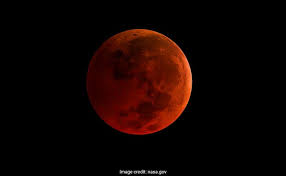Understanding the Blood Moon: Science and Significance

Introduction to the Blood Moon
The phenomenon known as the blood moon has captivated the attention of astronomers and enthusiasts alike. Blood moons occur during a total lunar eclipse when the Earth comes directly between the sun and the moon, causing the moon to take on a reddish hue. This intriguing event not only holds scientific importance but also features prominently in various cultural and historical contexts.
The Science Behind the Blood Moon
During a total lunar eclipse, the Earth’s atmosphere scatters sunlight, filtering out the shorter blue wavelengths. The longer red wavelengths are then cast onto the moon, giving it a striking red appearance. This phenomenon is scientifically significant as it provides an opportunity for astronomers to study the composition of the Earth’s atmosphere. The next anticipated blood moon will occur on March 14, 2025, offering a unique chance for observation.
Cultural Significance and Beliefs
The blood moon has also been steeped in myth and legend across various cultures. In many traditions, it is seen as an omen or a sign of transformation. For example, Native American tribes often associate it with changes in seasons and agricultural cycles. The biblical context also refers to blood moons in prophetic texts, enhancing its significance among various religious groups. In modern times, such events have been marked by public gatherings and viewing parties, emphasizing community engagement.
Viewing the Blood Moon
For those interested in witnessing this astronomical event, the upcoming blood moon can be effectively viewed with the naked eye, though binoculars or telescopes can enhance the experience. Locations with minimal light pollution and clear skies are ideal for optimal viewing. Sharing this experience can foster a deeper appreciation for the universe and its cycles.
Conclusion: Why You Should Pay Attention
As we look forward to the next blood moon, the event serves as a reminder of the wonders of our solar system and the connections we share with both science and culture. Whether you are a seasoned astronomer or a curious newcomer, the blood moon presents an exciting opportunity to explore the night sky and deepen your understanding of lunar phenomena. Mark your calendars, gather your friends, and get ready to participate in this spectacular celestial display, which continues to inspire awe and speculation among people around the world.






